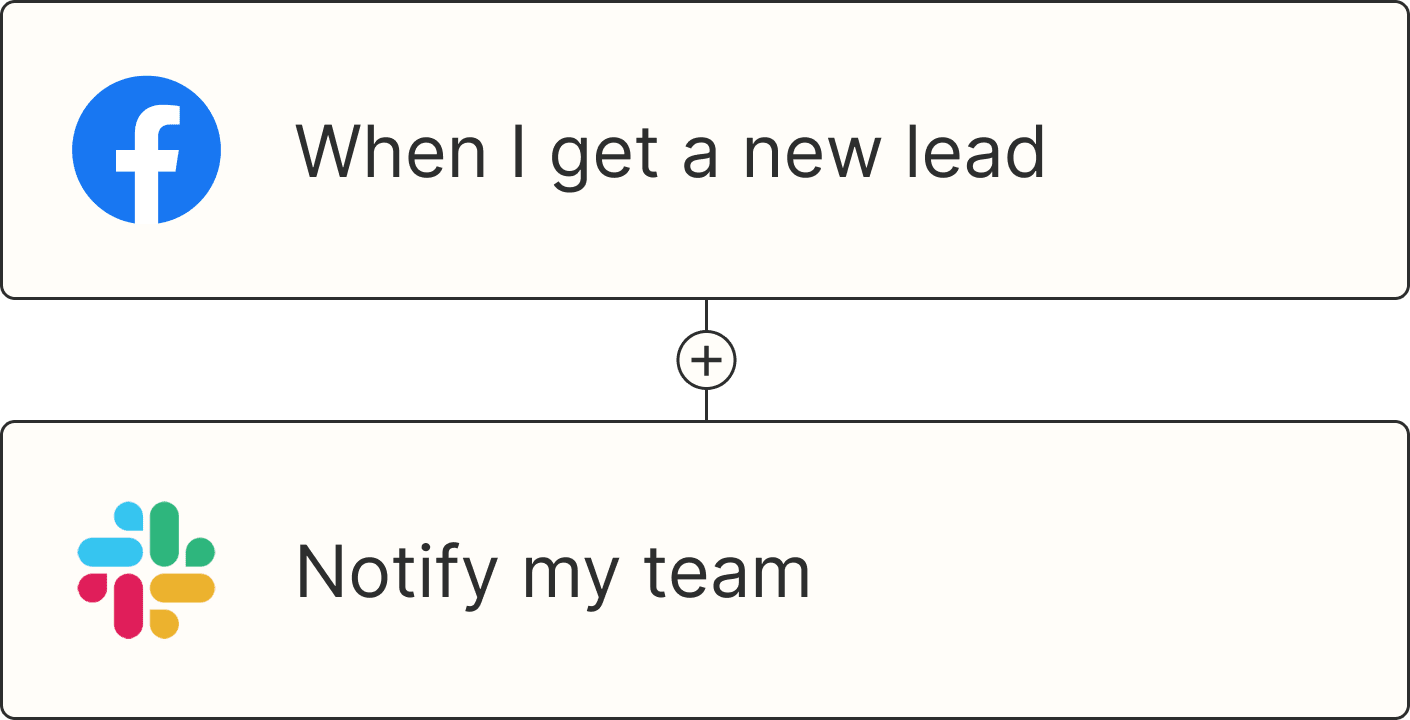Since I started using WordPress almost a decade ago, I've used various plugins to create forms. After much trial and error, I eventually settled on WPForms, but there are literally hundreds more form plugins to choose from.
So, if you're looking for a WordPress form plugin to quickly create contact forms, online surveys, registration forms, or applications, you've come to the right place. I considered and researched dozens of apps and did in-depth testing on the top 20 contenders to narrow it down to these eight form plugins for WordPress.
The best WordPress form plugins
WPForms for flexibility and usability
Gravity Forms for building custom forms
Formidable Forms for advanced options and an app builder
Fluent Forms for full functionality on every plan
Quill Forms for conversational forms
Happyforms for lightweight forms
UserFeedback for gathering user feedback
SureForms for AI-generated forms
What makes the best WordPress forms plugin?
How we evaluate and test apps
Our best apps roundups are written by humans who've spent much of their careers using, testing, and writing about software. Unless explicitly stated, we spend dozens of hours researching and testing apps, using each app as it's intended to be used and evaluating it against the criteria we set for the category. We're never paid for placement in our articles from any app or for links to any site—we value the trust readers put in us to offer authentic evaluations of the categories and apps we review. For more details on our process, read the full rundown of how we select apps to feature on the Zapier blog.
There are plenty of lists of the best WordPress form plugins, so what makes this one different? Here, I've focused on the best premium form plugins for WordPress. While there are hundreds of free plugins in the WordPress repository, they only offer limited functionality. I tested a few, just to make sure, and they were pretty much black-and-white compared to the full-color premium plugins. That said, most of these premium form plugins have a free "lite" version, so I'd check those out first.
Also: I didn't just read these apps' marketing materials and customer reviews. I spent dozens of hours researching and testing the best WordPress form plugins. I signed up for each one, got to grips with its user interface, and created some forms.
As I was testing the plugins, here's what I was looking for:
Ease of use. Installing, configuring, and creating a form in WordPress shouldn't be complicated. You want something relatively straightforward to get your first form live as soon as possible. And preferably, you want it to include a visual builder, so you can instantly see what you're creating. Any plugins that were difficult to purchase, install, or use were eliminated.
Templates. Unless you're a designer, there's nothing worse than staring at a blank form, wondering where to begin. Most of these plugins come with various pre-made form templates to get you started quickly.
Customization options. Whether you start from scratch or use a template, you'll want to customize your form at some point. For instance, you might want styling options to fit your existing branding or conditional logic to hide certain elements—like buttons, fields, or form sections—based on user inputs.
Responsiveness. You'll want your forms to look good on all devices—people are just as likely to access your forms from a mobile device or tablet as a desktop.
Spam protection. Unfortunately, online forms attract spam messages. All these WordPress form plugins include anti-spam features, like honeypot and reCaptcha, so you only receive desirable responses.
This is the third year in a row I've tested apps for this article, and things haven't changed much year over year. Overall, I whittled the list down from over 40 possibilities to the eight best form plugins for WordPress.
The best plugins for WordPress forms at a glance
| Best for | Standout feature | Pricing |
|---|---|---|---|
Flexibility and usability | 2,000+ ready-made form templates | Starts at $99/year | |
Building custom forms | Fantastic selection of add-ons | Starts at $59/year | |
Advanced options | Includes an app builder | Starts at $79/year | |
Full functionality in every plan | Preview all the templates with demos | Starts at $79/year | |
Conversational forms | Ability to control access to forms in various ways | Starts at $99/year | |
Creating lightweight forms | Scrollable Terms field | Starts at $89/year | |
Gathering user feedback | Targets specific devices and pages | Starts at $99/year | |
AI-generated forms | Instant, stunning, and functional forms | Starts at $59/year |
Best WordPress form plugin for flexibility and practicality
WPForms

WPForms pros:
2,000+ templates to get you up and running
Extra anti-spam and security options
WPForms cons:
Not many third-party add-ons
WPForms is a comprehensive form builder plugin for WordPress. It has all the features you need, including a vast selection of pre-made form templates to get you started. There are nearly two thousand templates available, ranging from a simple contact form to an advanced mortgage application form, so there's likely a template for your needs. If not, you can always start from scratch with a blank form.
Either way, the visual drag-and-drop builder makes it incredibly easy to customize your forms. You can add elements like fields, radio buttons, dropdown selections, and section dividers, and then apply smart conditional logic to show or hide them. It's also easy to customize and style forms to fit your website branding with the Form Themes feature, and there's even the option to create multi-page or conversational forms to improve your users' experience.
The plugin now comes with a generative AI tool to help you create and customize forms. Just tell it what you want—such as a new form, additional fields, or a calculation formula—and get instant results.
WPForms has robust anti-spam features with honeypot and Google's reCAPTCHA (v2 and v3), plus Cloudflare Turnstile, hCaptcha, and Custom Captcha so that you can collect bonafide form submissions. And there's a raft of add-ons and integrations to extend the plugin's functionality further. For example, you can connect to:
Marketing apps—like Mailchimp, HubSpot, and Salesforce
Payment gateways—like PayPal, Stripe, and Square
Useful utilities—like geolocation, Google Sheets, and digital signatures
WPForms just does everything a WordPress form plugin should do—and well. For everything else, you can use WPForms' Zapier integration to connect with thousands of apps. Install the WPForms Zapier add-on, and then take a look at some of the ways you can automate WPForms. Or try one of these pre-made workflows.
Save new WPForms entries to a Google Sheets spreadsheet
WPForms pricing: Free lite version; premium plans start at $99/year ($49.50 for the first year).
Best WordPress form plugin for building custom forms
Gravity Forms

Gravity Forms pros:
Design and develop more custom forms
Fantastic selection of add-ons
Gravity Forms cons:
Limited choice of pre-made templates
Gravity Forms is the best plugin for building custom forms. For instance, say you wanted to create an employment application form, you could add columns, a file upload option for resumes, and a T&Cs checkbox, and then space things out over multiple pages so the whole form-filling experience isn't overwhelming. And the drag-and-drop visual builder makes it easy for everyone—not just developers—to design and build those kinds of custom forms.
Although the form preview functionality isn't as impressive as other form plugins—it tends to display differently once it's published—there's an option to overlay a design grid and structure layout to see how your form aligns on the page.
Gravity Forms has always been a solid choice, but the latest version keeps everyone happy. For example, developers can access over 100 new components, designers can enhance form styling via the WordPress block editor instead of using custom CSS, and there's the much-awaited Conversational Forms add-on, so you can create a more interactive and personalized experience for your users.
When it comes to anti-spam protection, you now choose between the standard Google reCAPTCHA or the new Cloudflare Turnstile, which offers a less frustrating, CAPTCHA-free experience for users.
What Gravity Forms lacks in pre-built templates, it makes up for with a vast library of official, certified, and community add-ons that extend the functionality in countless ways. For example, the certified add-on GravityView allows you to display form entries on the front-end of your site and build no-code web apps.
Gravity Forms also integrates with Zapier, opening up thousands more possibilities—just install the Gravity Forms Zapier add-on. Read about how to connect Gravity Forms to thousands of other apps, or check out these examples.
Create rows in Google Sheets for new Gravity Forms submissions
Create Salesforce leads with new Gravity Forms submissions
Create Brevo subscribers from new Gravity Forms entries
Gravity Forms pricing: No free version available; premium plans start at $59/year.
WS Form is a developer-friendly Gravity Forms alternative. It boasts 100+ templates, 90+ integrations, and 55+ field types. And you can extend the functionality by selecting from 50+ premium add-ons for apps like Stripe, WooCommerce, and Slack. From a non-developer perspective, I found the plugin less intuitive. But if you're a developer, I reckon you'll want to compare WS Form features with Gravity Forms. There's a free lite version available; premium plans start at $59/year.
Best WordPress form plugin for building advanced forms and apps
Formidable Forms

Formidable Forms pros:
400+ ready-made form templates
Includes an app builder (Formidable Views)
Formidable Forms cons:
Form styling requires some basic HTML knowledge, such as border padding options
Formidable Forms is one of the most advanced WordPress form plugins. Get started with over 400 ready-made templates, from contact and payment forms to registration forms and calculators, or start from scratch with a blank canvas and design your own form.
Alternatively, you could try an AI-generated form. Just enter a description of the form you want—simple, short, or complex—and the AI form builder will create your form. If it's not quite right, you can still make changes in the editor.
Inside, drag and drop the fields you want to use onto your form, and start tailoring its appearance and behavior with custom styling and conditional logic. The form styler is really easy to use, and you can quickly adjust your form colors, borders, padding, and other options with some basic HTML knowledge. You can also set a simple conditional logic to only display a field when another is completed—for example, only show the message field when the email field is populated.
You can go beyond basic forms with multi-page and conversational forms that show a progress bar, so users don't feel overwhelmed when completing longer forms. Additionally, you can transform entries into listings, directories, calendars, timeline views, and powerful front-end content using its app builder, Formidable Views (part of Formidable Forms' evolution from form builder to data management and presentation platform).
Formidable Forms includes invisible spam protection options like reCAPTCHA, hCaptcha, Akismet, and a blocklist so that you can control form submissions. Plus, it integrates with 20 third-party products, including Zapier, to extend the functionality further. Learn more about how to connect Formidable Forms to thousands of other apps, or take a look at these examples.
Formidable Forms pricing: Free lite version; premium plans start at $79/year ($39.50 for the first year).
Best WordPress form plugin for all-inclusive functionality on every plan
Fluent Forms

Fluent Forms pros:
All features are included on every plan (except the free plan)
70+ pre-made form templates
Fluent Forms cons:
Tricky to set up communication notifications
Fluent Forms is a lightweight yet powerful form builder plugin for WordPress that (refreshingly) includes every feature on every plan—the only differentiator is the number of site licenses.
You can start creating forms with the drag-and-drop builder and dozens of pre-made templates covering marketing, education, finance, government, and plenty of other categories. (You can even preview the demos before deciding which one to use.) Plus, there's an AI form builder to help you create forms quickly and easily.
You can use multi-step or conversational forms to make your forms flow more naturally, and by applying additional conditional logic, you can reveal extra fields one step at a time. The design settings are easy to use and allow you to quickly configure the look and feel of your forms for mobile, tablet, and desktop. I did find the communication notifications a bit trickier to set up than the other form plugins.
With over 60 third-party integrations, plus loads more if you use a webhook to connect it through Zapier, there's plenty of scope to extend Fluent Forms' functionality. (And, unlike other plugins, there's no extra charge for the add-ons except the Signature Add-on.)
Fluent Forms pricing: Limited functionality on the free version. Premium plans start at $79/year. There are also lifetime packages available.
Everest Forms is a Fluent Forms alternative with all-inclusive functionality on every plan. The flexible drag-and-drop form builder comes with pre-made templates to create contact forms, order forms, payment forms, surveys, and more. There's no AI builder per se, but you can create a contact form chatbot with the OpenAI integration. There are 35+ direct integrations with popular third-party platforms. The downside of Everest Forms is that you have to download and install numerous add-ons for all the components you want—such as multi-step forms, custom CAPTCHA, and PDF form submission—and the style customizer is on a separate screen, so it's not as user-friendly or intuitive as other plugins. There's limited functionality on the free version. Premium plans start at $69/year ($48.30 for the first year), and lifetime packages are also available.
Best WordPress form plugin for conversational forms
Quill Forms

Quill Forms pros:
Focus on conversational forms
Jump logic
Quill Forms cons:
No classic forms
Quill Forms is a versatile WordPress form builder for conversational forms, surveys, and quizzes. It's like Typeform for WordPress, but at a fraction of the price.
You can choose from 12 pre-made templates or start from scratch before quickly customizing and styling your form. You'll preview the form on the right side of your page as you build it on the left.
A couple of special features I like are the Jump Logic, which allows respondents to jump to different questions based on their answers, and the Calculator, where you can add advanced calculations to your form, like cost estimations. Quill Forms also includes a Form Locker, which enables you to add password protection, restrict access to logged-in users or specific user roles, add start and end dates, and prevent multiple submissions with the same email, phone, or userid.
Respondents also have the option to save partial form submissions (in their browser) and continue later, which improves completion rates and conversion optimization. (I think that's an excellent, user-friendly, time-saving feature.)
Spam protection is limited to reCAPTCHA (v2 and v3), but Quill Forms connects directly with over 40 apps, plus thousands more via Zapier. Here are a couple of pre-made workflows to help you connect Quill Forms to the other apps you use.
Add new Quill Forms entries to Google Sheets as rows
Add new Quill Forms entries to Flodesk as subscribers instantly
Send a message in Telegram for each new form entry in Quill Forms
Quill Forms pricing: Limited free version available; premium plans start at $99/year ($69 for the first year).
Best WordPress form plugin for designing lightweight forms
Happyforms

Happyforms pros:
Preview your form as you build it
No add-ons required
Happyforms cons:
Only 6 pre-made form templates
Happyforms is a flexible, lightweight WordPress form builder that doesn't require any add-ons. There are only six pre-made templates that you can download and import into your site, but the support team is more than happy to assist you in crafting a form for your needs.
The form builder blends in with your WordPress dashboard—there are no weird buttons, notices, or cluttered screens—and you get a live preview as you build your form. You can create multi-column layouts and multi-page forms with step indicators, and it's easy to add colors and layouts to style your forms.
You get unlimited forms, fields, emails, and submissions, but one of my favorite features is the Scrollable Terms field. For example, you can add your privacy policy and optionally require users to scroll through it before they can submit their form.
Like Quill Forms, users can now save and resume submissions later, which is particularly welcome when completing long forms. Plus, they can preview their completed form before submission, which reduces errors and improves data quality.
Happyforms also includes honeypot and Google reCAPTCHA spam prevention, plus over 15 direct integrations, including Zapier, to extend its functionality. Here are a few ideas to get you started automating Happyforms.
Turn new HappyForms replies into Salesforce leads in campaigns
Happyforms pricing: Free limited version available; premium plans start at $89/year.
Best WordPress form plugin for gathering user feedback
UserFeedback

UserFeedback pros:
25+ feedback templates
Targets specific devices and pages
UserFeedback cons:
Restricted to gathering user feedback
UserFeedback is slightly different from the other plugins here. It creates a feedback widget to position in your theme's widget areas, such as the sidebar or page footer. You can also add an inline feedback form on a specific page.
UserFeedback lets you ask multiple-choice or free-form questions, plus you can target surveys for different pages and devices. For example, you could create a multiple-choice feedback form for your Privacy page that only displays on mobile devices. The plugin also supports star ratings and Net Promoter Score® (NPS) questions and includes heatmaps that show you where visitors click, scroll, and leave a page.
Start with one of the 25+ templates, or build your own feedback form from scratch. You can add custom branding to fit your website, like changing the colors and adding your logo. It only took me a few seconds to launch a user feedback survey using the plugin, and you can see results in your WordPress dashboard in real time. You can also use AI to automatically summarize survey results, especially open-text responses, so it's easier and faster to extract actionable insights.
If you're specifically looking to add user feedback forms to your WordPress site, this is a solid pick.
UserFeedback pricing: Free lite version available; premium plans start at $99/year ($49.50 for the first year).
Best WordPress form plugin for AI-generated forms
SureForms

SureForms pros:
Instant AI-powered forms
Dedicated landing page for your forms
SureForms cons:
No pre-made templates
SureForms is a modern form builder plugin with a twist. Unlike the other plugins on this list, there are no pre-made templates. Instead, you can either create your forms with AI or start from scratch. And with the AI option, you can either type your prompt or use your voice to dictate your requirements. I was impressed with the instant results.
First, I asked AI to create a job application form. The result was a two-page form with all the expected fields. Next, I asked AI to create a form for a cafe that would allow customers to order coffee and cakes. Again, the result was detailed and included dropdown selections for types of coffee and cake, checkbox options to stay in or take out, special instructions for dietary requirements or preferences, and preferred pickup date and time.

The only minor error was using the wrong field type for the date/time picker, but I fixed it in a couple of seconds in the editor.
Speaking of which, the editor is a dream to use—it's just like working in the standard WordPress block editor. Each block comes with its own set of controls for changing things like color, width, and alignment, which show and hide automatically when you have a block selected. So I was able to quickly change the settings and styles to the coffee-colored form above.
(For context, I tried creating the same AI-generated form on another plugin—not on this list—and it returned two fields: coffee and cake.)
One other feature I should mention is the Instant Forms. This allows you to quickly create a dedicated landing page for your forms without needing to embed them on a page or post, making it easy to share your forms directly.
Since SureForms is brand new, some "standard" features, such as save and resume, PDF generator, and payments, are still in the pipeline. But like the other plugins listed here, you can connect your forms to thousands of other apps using SureForms' Zapier integration to connect it to the rest of your tech stack. Here are some templates to get you started.
Add/update subscribers in Mailchimp from new SureForms submissions
Create Google Sheets rows for new SureForms submissions
SureForms pricing: Free version available; premium plans start at $59/year ($49 for the first year). Lifetime packages are also available.
Which WordPress form plugin should you use?
Each of these WordPress form plugins has pros and cons. For example, you get ultra-specific forms with UserFeedback and Quill Forms, while the others offer a range of form types. Depending on what you're looking for, though, one of these form plugins will do the trick—and it'll generally be easier than embedded forms from another form app.
Only Quill Forms and SureForms offer a free demo, so I'd recommend first trying the free version of each plugin to get a feel for what it has to offer. It won't have all the functionality, but you'll soon see if you like working with it. Then, when you've narrowed down the field, purchase the premium version.
For now, I'll continue using WPForms because I'm familiar with the layout and like the selection of pre-made templates. But which WordPress form plugin will you choose?
Related reading:
This article was originally published in September 2023. The most recent update was in July 2025.









